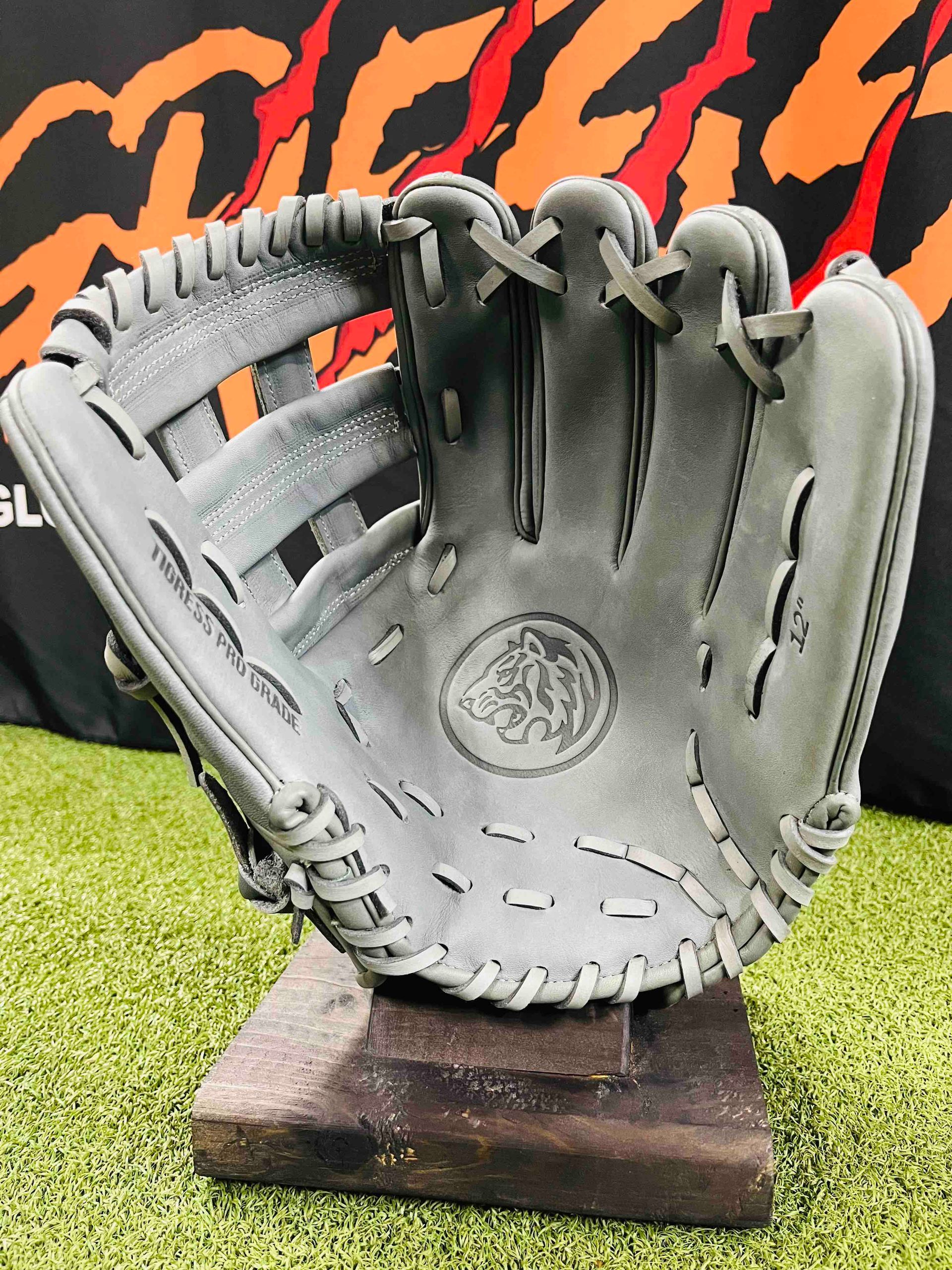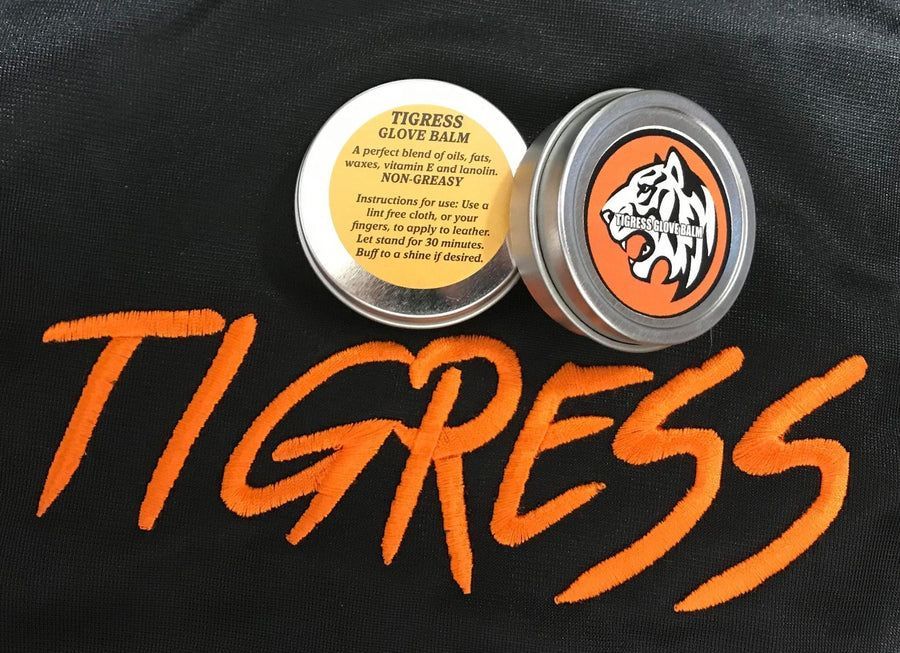THE DIFFERENT KINDS OF LEATHER USED FOR SOFTBALL GLOVES
Why Our Softball Gloves are a Cut Above
Regarding softball gear, your glove is your most essential tool. It's your partner on the field, helping you snag those fly balls, scoop up grounders, and make the plays that win games. That's why we at Tigress Gloves are passionate about crafting softball gloves that perform and last.
It All Starts with Premium Materials
We believe the foundation of a terrific softball glove lies in the quality of its materials. That's why we meticulously select only the best leathers for our gloves:
Steerhide and Kip Leather: These top-tier leathers offer the ideal combination of durability, flexibility, and a perfect feel. They allow for the glove to break in beautifully, molding to your hand for a custom fit.
Sheepskin Leather: In areas where the glove meets your hand, we use luxuriously soft sheepskin for maximum comfort and reduced friction.
What We Don't Use (And Why It Matters)
You won't find any inferior materials in our softball gloves. We've made a conscious decision to avoid:
Synthetic Leathers (Plastics): These lack the breathability, durability, and natural feel of genuine leather. They can make your hand sweaty and lack the ability of the leather forming to your hand.
Pigskin: While cheaper, pigskin is less durable, which is a terrible choice where durability is desired.
Cowhide: This is generally a lower-grade leather, often used in budget gloves. While it is easily broken in, it will lack the durability to last season after season. Actually making players pay more to replace a glove that failed early.

The Tigress Gloves' Commitment to Craftsmanship
We believe a well-made softball glove is beautiful and should last for seasons to come. Our skilled craftspeople take pride in constructing each glove with precision and care. We focus on:
Performance: Our gloves are designed to optimize your personal skill level, whether you're an infielder, outfielder, or catcher.
Usability: Every detail matters - Our larger pocket is made for softballs. Our added structure aids in holding the glove's shape. The lack of patches allows the leather to form and move more naturally.
Fit: A glove should feel like an extension of your hand. Our gloves break in perfectly, providing a secure and personalized fit.
Longevity: Our softball gloves will deliver seasons of reliable performance with proper care.
Experience the Difference
If you're serious about your game, invest in a softball glove built to last. Choose a glove that's crafted from premium materials and constructed with care. Choose a glove that helps you play at your best.
Every Tigress Glove is a terrific value and is comparable to other gloves selling for twice the price.
The Perfect Blend: Premium Leather, Supple Feel
At Tigress Gloves, we believe you shouldn't have to sacrifice comfort for top-tier performance on the softball field. That's why we go the extra mile to ensure our gloves deliver the best of both worlds: the durability of premium leather and a supple, comfortable feel.
Understanding High-End Leather
The highest quality leathers, like our Pro Select, Pro Steer, and Pro Kip, start with a natural stiffness. This inherent quality guarantees the durability and shape retention you need in a performance glove. Don't confuse this with cheaper materials that become floppy and lose their structure over time—a sign of an inferior product, not a sign of quality.
The Tigress Difference: Softening Expertise
We recognize that a stiff, brand-new glove can be challenging to use immediately. That's why we offer expert softening as an option across our custom softball gloves and include it as a standard feature on most stock gloves. This careful process makes your glove feel broken in and ready for action without compromising the lasting strength of the leather itself.
Elite Players and Untouched Stiffness
We understand that some elite athletes, especially those with years of experience, prefer an utterly stiff glove they can break on their terms. That's why we offer select stock models with untouched leather. These gloves boast the same premium materials as our softened options, offering more control over the break-in process.
The Repeat Customer Advantage
Tigress Gloves' dedication to quality, value, and an exceptional out-of-the-box experience is why we're honored to have many repeat customers. Loyal players are the best testament to the difference a Tigress glove makes on the field, and we're thrilled that feedback tells us we're doing things right.
Join Team Tigress
Whether you're a seasoned veteran who trusts us for that next perfect glove or a first-time buyer discovering the Tigress advantage, we're excited to have you on our team. Experience the difference between premium leather, expert softening, and a glove that helps you play your best.

Other Types of Leather Used for Softball Gloves
While steerhide, kip leather, and sheepskin are the gold standard for softball gloves, manufacturers sometimes use other leathers, often to target specific price points or player preferences. Here's a breakdown:
Cowhide:
Pros: It is the most widely available and affordable leather. Usually thicker and heavier than other options. It can be durable if treated correctly.
Cons: Often less supple than steerhide or kip, making break-in more challenging. Prone to stiffness and creasing over time, if not of the highest quality.
Best for: Beginner-level and recreational players; budget-conscious options.
Pigskin:
Pros: Very inexpensive; can be surprisingly soft initially.
Cons: Not known for its durability. It loses its shape quickly, stretches excessively, and becomes floppy. It absorbs sweat readily, leading to deterioration.
Best for: Temporary practice gloves, extremely budget-restricted purchases.
Buffalo Hide:
Pros: Similar characteristics to steerhide in terms of durability and structure. It is often slightly more affordable than steerhide.
Cons: It is less common, so finding options can be more complex. It requires a similar break-in period as steerhide due to its thickness.
Best for: Players seeking a durable glove with a slightly lower price than top-tier steerhide options.
Japanese Kipskin:
Pros: Praised for exceptional softness and responsiveness. Thinner than steerhide, it provides an excellent feel and control.
Cons: Significantly more expensive. It may be less durable over the long term compared to thicker leather.
Best for: Elite players prioritizing feel and a quicker break-in, willing to invest in top-of-the-line materials.
Synthetic Leathers:
Pros: Inexpensive, often very lightweight. It can be designed with specific performance characteristics (grip, breathability).
Cons: Lack the natural feel and breathability of genuine leather. Prone to tearing and scuffing, especially in high-wear areas. Often, don't break in as organically.
Best for: Young beginners where frequent glove changes are expected or specialty practice gloves designed for a specific purpose.
Important Considerations:
Leather Grade: Quality can vary significantly within a specific leather type. Lower-grade options will exhibit less desirable qualities.
Hybrid Gloves: Some manufacturers combine multiple types of leather (e.g., steerhide palm, synthetic back) to balance price and performance.
Personal Preference: Some players prefer the feel of one leather over another, regardless of price or durability.
The Bottom Line: Always prioritize quality materials within your budget when choosing a softball glove. Prioritize a glove that feels good in your hand and suits your playing style, even if it means investing slightly more upfront for a glove that will deliver lasting performance and satisfaction.
Understanding Leather Terminology
Beyond the basic types of leather, you might encounter terms that give you more insight into a glove's construction and quality:
Full-Grain Leather: This is the highest-quality leather, taken from the outermost layer of the hide, where the fibers are most dense. It's known for its outstanding durability, strength, and beautiful natural grain pattern.
Top-Grain Leather: The layer beneath full-grain, sanded to remove imperfections, resulting in a smoother finish. It is still considered high-quality but slightly less durable than full-grain.
Corrected-Grain Leather: Lower-quality leather that's been heavily treated and often embossed with an artificial grain pattern to mask flaws. It is less durable and doesn't develop the same natural patina as higher-grade leather.
Split Leather: The hide's bottom layer lacks the upper layers' strength and durability. It is mainly used on the backs of gloves or in low-cost options.
The Importance of Workmanship
Remember, the type of leather is only one part of the equation. Craftsmanship plays a vital role in how well a glove performs and lasts. Look for:
Strong, Tight Stitching: Pay attention to the stitching around the pocket, fingers, and where the lacing holds the glove together. Loose or frayed stitching is a red flag for poor construction.
Quality Lining: Linings help manage sweat, add comfort, and impact how the glove breaks in. Higher-end gloves often feature softer, more breathable linings.
Overall Feel: A poorly designed glove won't feel right even with quality materials. Pay attention to the finger stalls, pocket depth, and overall glove balance in your hand.
Choosing the Right Leather for Young Players
Understanding the trade-offs between different leathers is crucial when searching for the perfect glove for a young softball player. Here's a breakdown of factors to consider:
Growth and Budget: Kids overgrow, and their hands along with them! It's essential to balance the desire for a quality glove with the reality that frequent replacements might be necessary. Cost-effective options, like cowhide or synthetic leathers, are often practical for beginners.
Ease of Break-In: Little hands might struggle with the naturally stiff feel of premium leather. Pre-softened cowhide gloves or those with thinner leather construction can make the break-in process faster and more enjoyable, encouraging young players to use their gloves consistently.
Weight Matters: Heavy gloves can tire out young arms quickly. Lightweight synthetics, or gloves with leather and synthetic materials, can ease the burden, promoting better mechanics and less fatigue during play.
Take Note of Comfort: While you want a glove that will last, remember that young players often put their gloves through less wear and tear than seasoned athletes. It's more important to find a glove that fits well, feels comfortable, and encourages them to develop a love for the game.
Player Input: Involve your young player in the decision! Let them try different gloves and see what feels good on their hands. Their enthusiasm for a glove that fits comfortably and looks cool can outweigh the benefits of slightly more durable leather.
Start with a glove that fits their current needs and budget. Prioritize comfort, ease of use, and a weight that suits their strength. Tigress Gloves are perfect for all ages and experiences, and they will be the best gloves to help you while you increase your skills.
Join Team Tigress today by finding your perfect glove in our shop.
Other Articles


Subscribe to our
Newsletter
Our newsletter is focused on bringing you the latest in news & tips.
Join the Newsletter
Thank you for subscribing.
Please try again later
All Rights Reserved | Tigress Gloves
Website by SPECK DESIGNS
All Rights Reserved | Tigress Gloves
Website by SPECK DESIGNS




